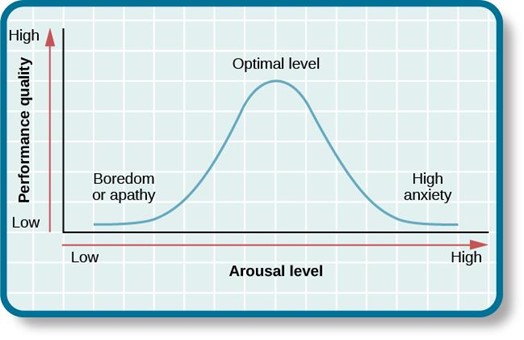Is This Anxiety?
First, let’s talk about what anxiety is.
What is Anxiety?
Anxiety is a common human experience most often understood as nervousness, apprehension, and worry. Anxiety is a complex state rooted in fear that presents as a wide range of mental, emotional, and physical symptoms with varying degrees of severity, therefore, understanding anxiety is helpful in appropriately responding to it.
When Your Brain Perceives a Threat
Anxiety is the result of a person’s brain going through a series of changes after it perceives a threat. Whether or not the threat is real, the brain may respond. That is why a genuine threat to safety and simpler things like giving a classroom presentation or getting into an argument can all feel very similar.
It all starts with the amygdala, a tiny but powerful part of the brain that is responsible for triggering the body’s stress response. When the amygdala detects a possible threat, it cues the hypothalamus to activate a network of nerves called the sympathetic nervous system. Then, the endocrine system releases hormones such as cortisol and adrenaline that trigger the body to respond to the perceived threat. That entire process is called the fight or flight response in which the person is highly activated and could potentially fight or flee from the threat. However, when the brain perceives a threat that isn’t really there – or isn’t nearly as severe as the stress response would indicate – it can lead to excess anxiety about commonplace activities.
The Overthinking Part of Anxiety
While the body is preparing to respond to the perceived threat through fight or flight, the prefrontal cortex is also engaged. The prefrontal cortex is responsible for slowing down to take time for rational thought and decision-making. However, when a person experiences too much anxiety too frequently, the prefrontal cortex may become overactive, leading to rumination and automatic negative thoughts. Those thinking patterns can create a cycle of anxiety in which the person becomes stuck in a loop of excess worry. They may feel unable to control their anxious thoughts even if they rationally understand there isn’t a threat.
What Does Age Have to Do With It?
The prefrontal cortex fully develops around age 25, so younger individuals may struggle more to regulate thoughts: “Reduced functional connectivity between the amygdala and the prefrontal cortex indicates a potential pathological factor for anxiety disorders in adolescents” (Xie, et al). In other words, adolescents and young adults may experience more anxiety because the prefrontal cortex in their brains is not yet able to stop and think rationally.
Why Are Some People More Sensitive to Anxiety?
Along with the amygdala, the rest of the brain’s limbic system also plays a role in the stress response of anxiety. The limbic region of the brain – responsible for memory and processing physical sensations – can become overactive and stuck in a heightened state, particularly for those with a trauma history. Individuals who have experienced time(s) in which their physical or emotional safety was truly at risk also often have memories and associations of being at risk. These individuals may have a heightened perception of threat as well as an increased sensitivity to stress, even if they are not truly at risk in the present moment.
What are Common Symptoms of Anxiety?
Anxiety has mental and emotional effects. The follow psychological symptoms are commonly reported with anxiety:
- Worry something bad will happen
- Feeling on edge
- Racing thoughts
- Irritability
- Obsessive thoughts
- Difficulty concentrating
- Feeling of dread
- Panic
The hormones released by the brain following the activation of the sympathetic nervous system also lead to changes in a person’s physical body. The most commonly reported physical symptoms of anxiety include:
- Increased heart rate
- Sweating
- Rapid breathing or difficulty breathing
- Hyperactivity
- Physical agitation
- Dizziness
- Blood sugar spikes
- Dilated pupils
- Churning stomach, nausea, or increased bowel movements
- Grinding teeth
- Trouble sleeping
- Sensitivity to touch
Your Body As An Alert System
Think of your body as a smoke detector. What does a smoke detector do? Although a common response is that it detects fire, it actually just detects smoke. It is important to know the difference between fire and smoke in order to appropriately respond. Fires are threats to bodily safety. Smoke is perceived as a threat that may feel very stressful but does not threaten bodily safety.
| Examples of “Fire” | Examples of “Smoke” |
| – Natural disasters | – Taking tests |
| – Sexual assault | – Public speaking |
| – Abuse of any kind | – Trying new things, going new places |
| – Witnessing violence | – Speaking to new people |
| – Accidents | – Arguments |
Just as a smoke detector in your home will beep incessantly when you burn the popcorn, your brain and body may respond to perceived threats in the same way. Your alarm (fight or flight response) may go off and signal a problem to you when no actual “fire” exists. Getting to know your early psychological and physical symptoms is helpful so that you can use calming strategies to turn off the alarm before anxiety takes over.
The Good Parts of Anxiety
When there truly is a threat, the fight or flight response of anxiety is like having a superpower. The process taking place in the brain and body can keep us safe and alive in situations of acute danger. However, we are not usually at risk most times we feel anxiety start to creep in. So how can we recognize that and use anxiety to help us in day to day life instead of being hijacked by it?
In the right dose, the stressors that lead to anxiety can actually improve our performance. The Yerkes-Dodson Law is the theory that “performance increases with physiological or mental arousal, but only up to a point. When levels of arousal become too high, performance decreases.” This theory is commonly represented by a curve with a steep, mountain-like peak. The shape of the curve demonstrates that, to a point, stress and performance are positively correlated because without any stress, the person does not care to perform well. On the other side of the curve, we see that when stress becomes too great and anxiety takes over, performance suffers. Learning how to manage your anxiety response so that performance reaches and stays around the optimal level makes anxiety work for you.

You Are Not Alone
According to the Anxiety & Depression Association of America, “Anxiety disorders are the most common mental health disorder in the United States, affecting approximately 40 million adults aged 18 or older.” Anxiety is a common experience that becomes a problem when it causes significant distress and interferes with daily activities, relationships, and quality of life. Clinically significant anxiety may be categorized according to symptoms and diagnosed as a variety of mood disorders. Anxiety is also very treatable and, in some cases, can even be beneficial. Understanding the process of anxiety and mental, emotional, and physical symptoms can help you respond appropriately, seek help when needed, and prevent anxiety from interfering with your life.
Blog written by Sentier therapist Sarah Souder Johnson, M.Ed., LPCC.
SOURCES:
https://adaa.org/understanding-anxiety/facts-statistics
https://www.nytimes.com/2022/01/19/well/mind/anxiety-benefits.html
https://courses.lumenlearning.com/suny-monroecc-hed110/chapter/yerkes-dodson-law/












